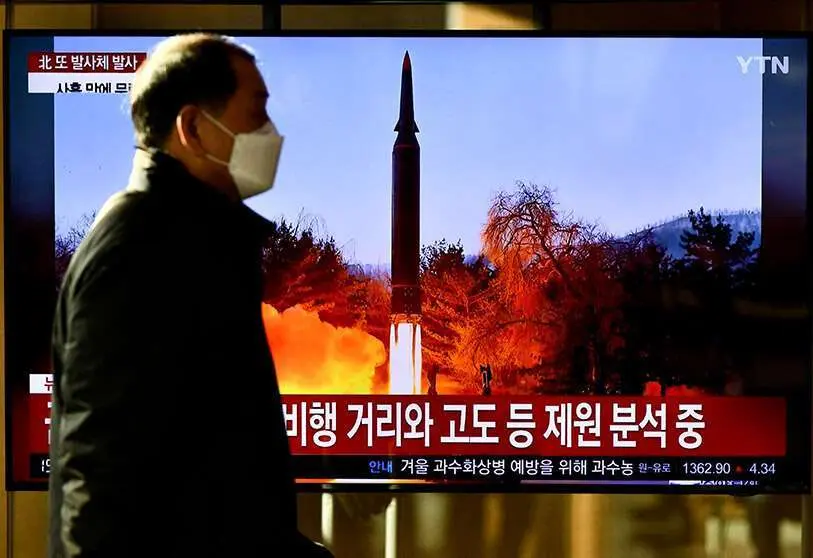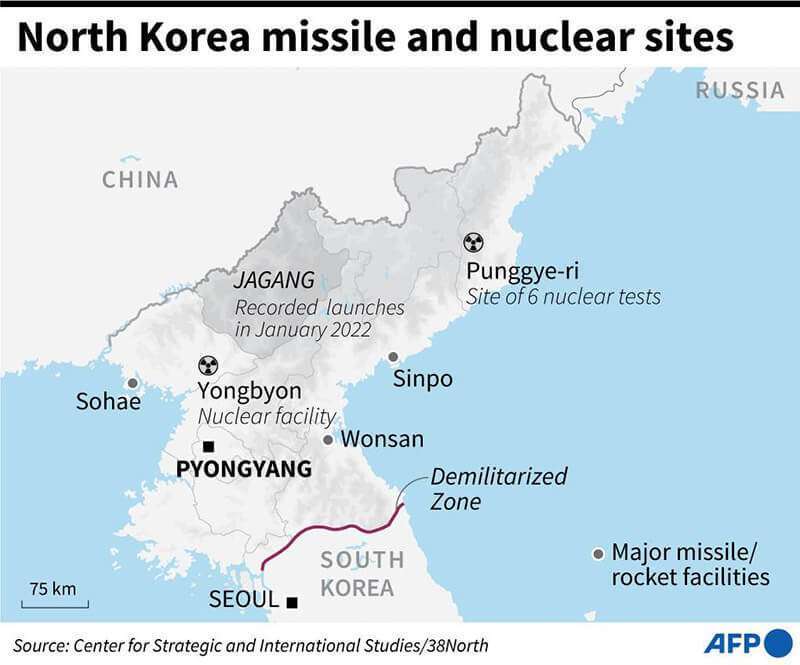North Korea toughens its message with third launch in nine days

North Korea today launched its third missile in the past nine days, just hours after threatening to respond "more strongly" to US sanctions this week against North Koreans linked to the regime's weapons programme.
Pyongyang's months of disinterest in dialogue, the renewed US willingness to tighten sanctions and the three North Korean weapons tests that have taken place in little more than a week bring back echoes of the tensions between the two countries in 2017.
The North Korean escalation and the unorthodox style of then US President Donald Trump led to a carousel of summits between Trump himself and North Korean leader Kim Jong-un that eased tensions, although they eventually led to a stalemate in negotiations that persists today.

However, the future diplomatic landscape on the Korean peninsula does not seem to be heading in the same direction at a time when the hermetic country remains more inward-looking than ever due to the pandemic. The fact is that it has had its borders locked down tight since January 2020 and has no vaccination plan in sight.
Regarding today's launch, the South Korean Joint Chiefs of Staff (JCS) said in a statement that the military "detected two projectiles believed to be short-range ballistic missiles launched from near Uiju in North Pyongyang province (northwest of the country)", near the border with China.
The missiles were fired at 14:41 and 14:52 (5:41 and 5:41 GMT) in the direction of the Sea of Japan (called the East Sea in the two Koreas) and travelled about 430 kilometres, reaching a maximum altitude of about 36 kilometres, according to the JCS.

South Korean and US military intelligence are still analysing the "detailed specifications of both projectiles".
For its part, the Japanese government has so far said it believes it is a single ballistic missile, while the Kyodo news agency reported, citing an official source, that the missile has fallen into the Sea of Japan, outside Japan's exclusive economic zone (EEZ).
On 5 and 11 January, the North Korean regime fired what it claims are hypersonic missiles, although Seoul and Tokyo, whose radar systems have initially had problems establishing the flight patterns of these projectiles, have insisted in their analyses that they are ballistic missiles that show a great capacity for manoeuvre.

Seoul has insisted that it is capable of "detecting and intercepting" these projectiles and that Pyongyang - which claims that with these tests it has successfully developed hypersonic technology - does not yet possess the knowledge or technology to manufacture this type of weaponry.
For its part, South Korea's National Security Council (NSC) again deplored the North's test and stressed that such tests "do not help stabilise the situation" at a sensitive time in the region, with the Beijing Winter Olympics scheduled to begin in three weeks and South Korea's presidential election two months away.
Today's North Korean test comes hours after Pyongyang threatened to respond in a "stronger and more determined" way to new sanctions that the United States passed this week against North Korean citizens it accuses of supplying materials and technology for the regime's weapons programme from abroad.

US Ambassador to the UN Linda Thomas-Greenfield also said this week that Washington is pushing for the Security Council to impose additional sanctions on North Korea as punishment for all the launches it has carried out since last September.
Washington believes North Korea used ballistic missiles in these tests, in violation of previous sanctions resolutions passed since 2006 to punish North Korea's weapons programme.
In a message broadcast on New Year's Day, North Korean leader Kim Jong-un, somewhat surprisingly, avoided sending a message to the US and assured that the regime's priority is the domestic economy and the strengthening of national defence.
Kim himself last year rejected US offers to try to resume dialogue on denuclearisation, stalled after the failed Hanoi summit with Trump in 2019, arguing that Washington maintains a "hostile" attitude towards his regime.








